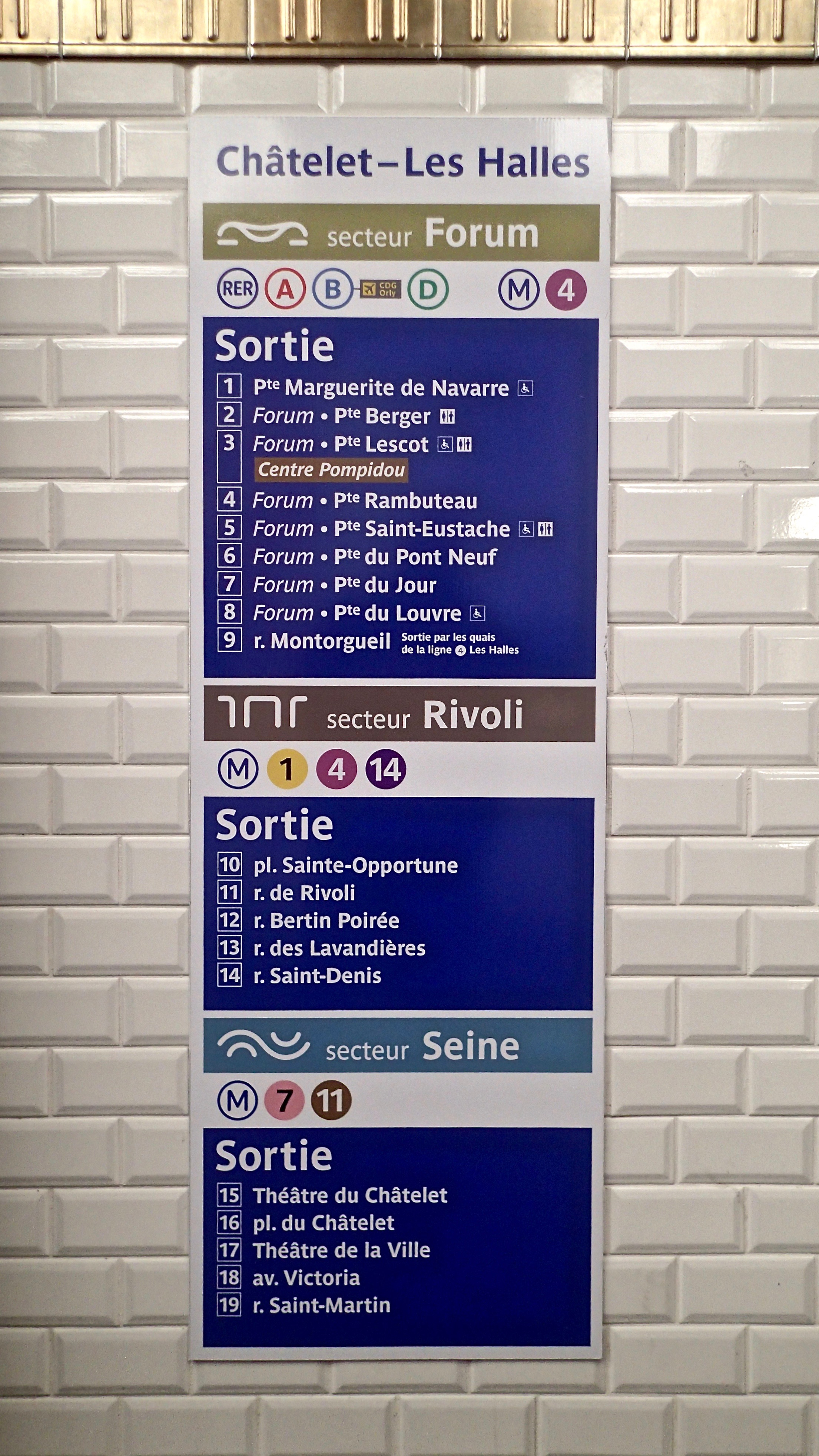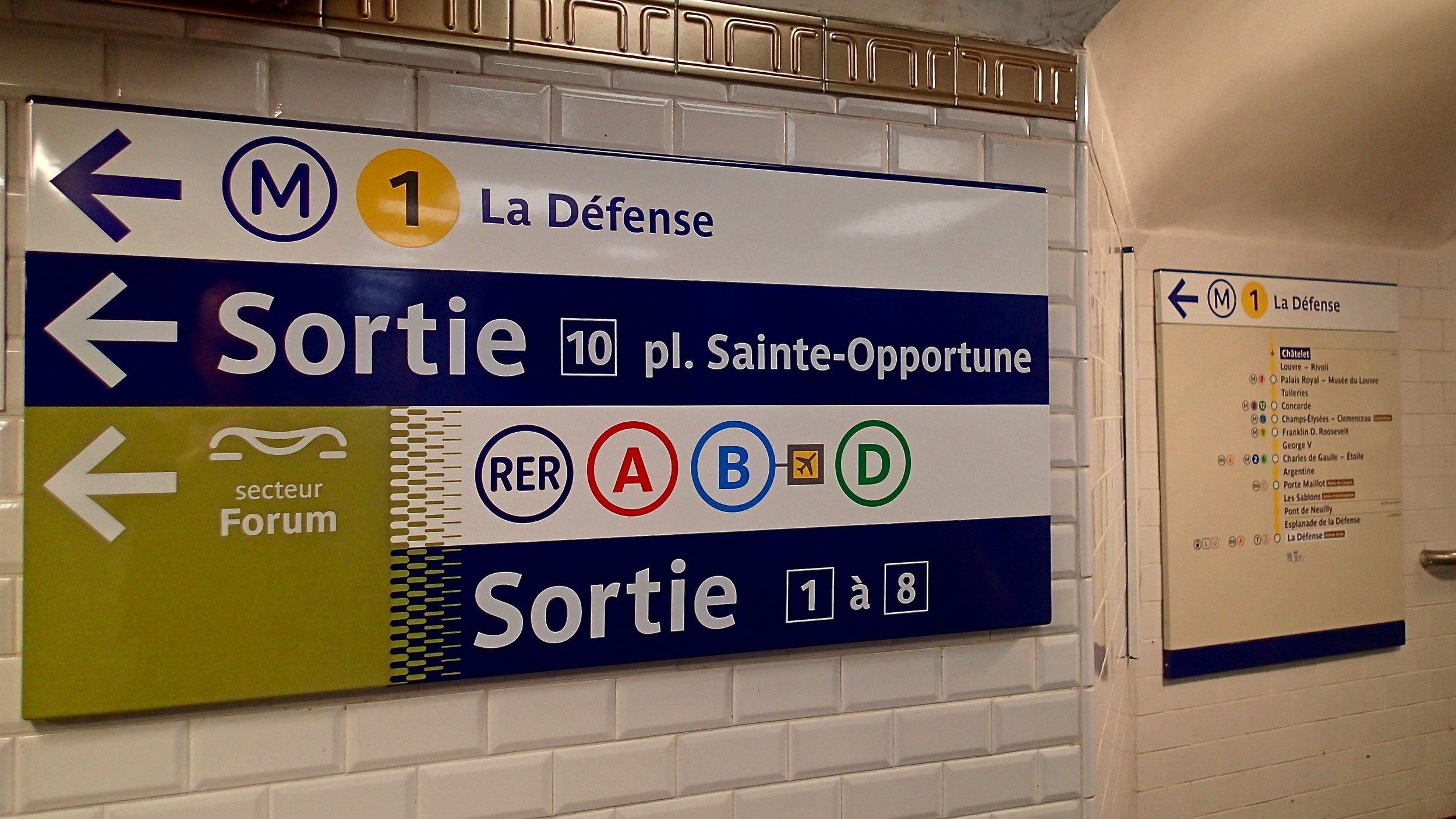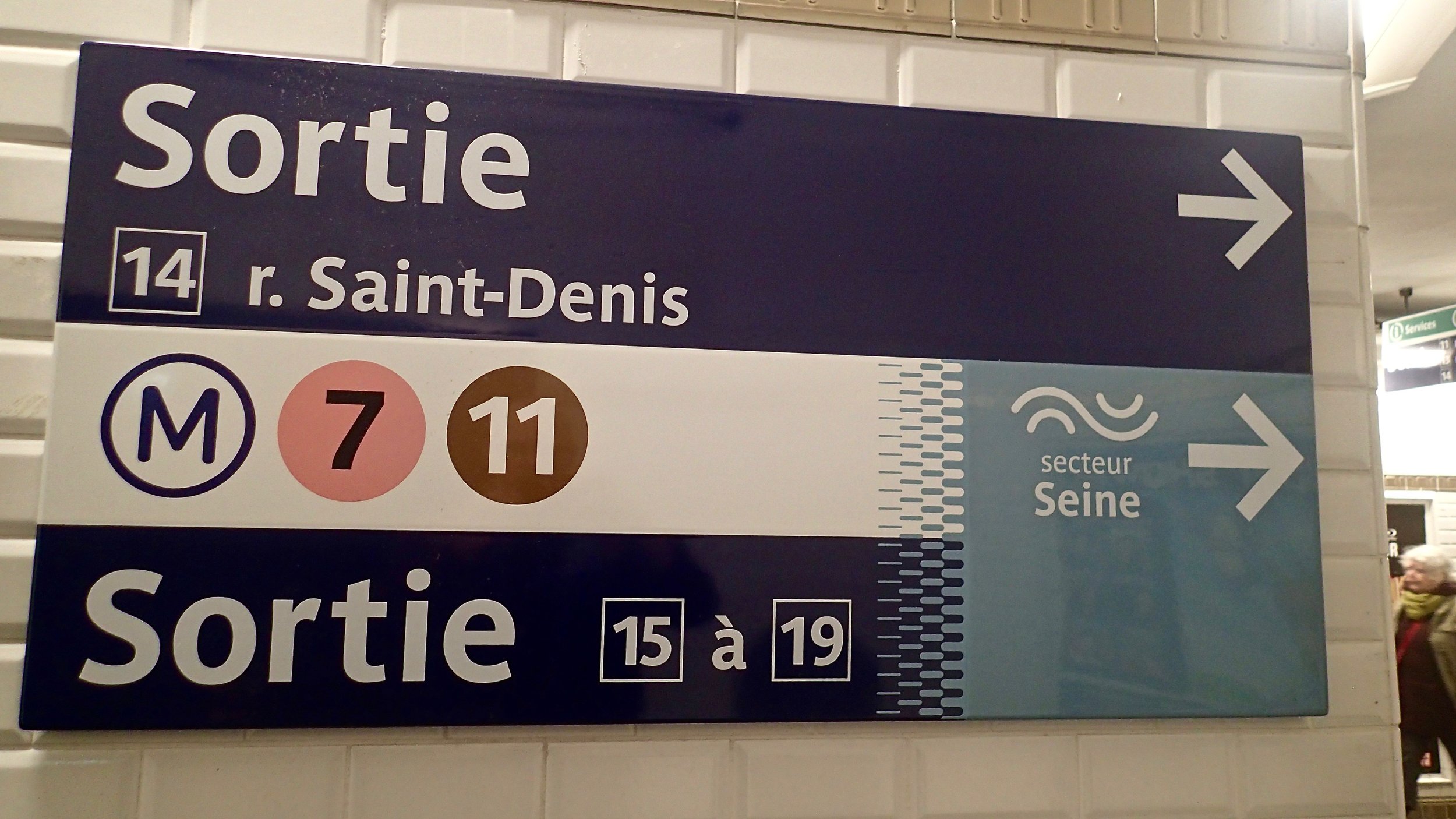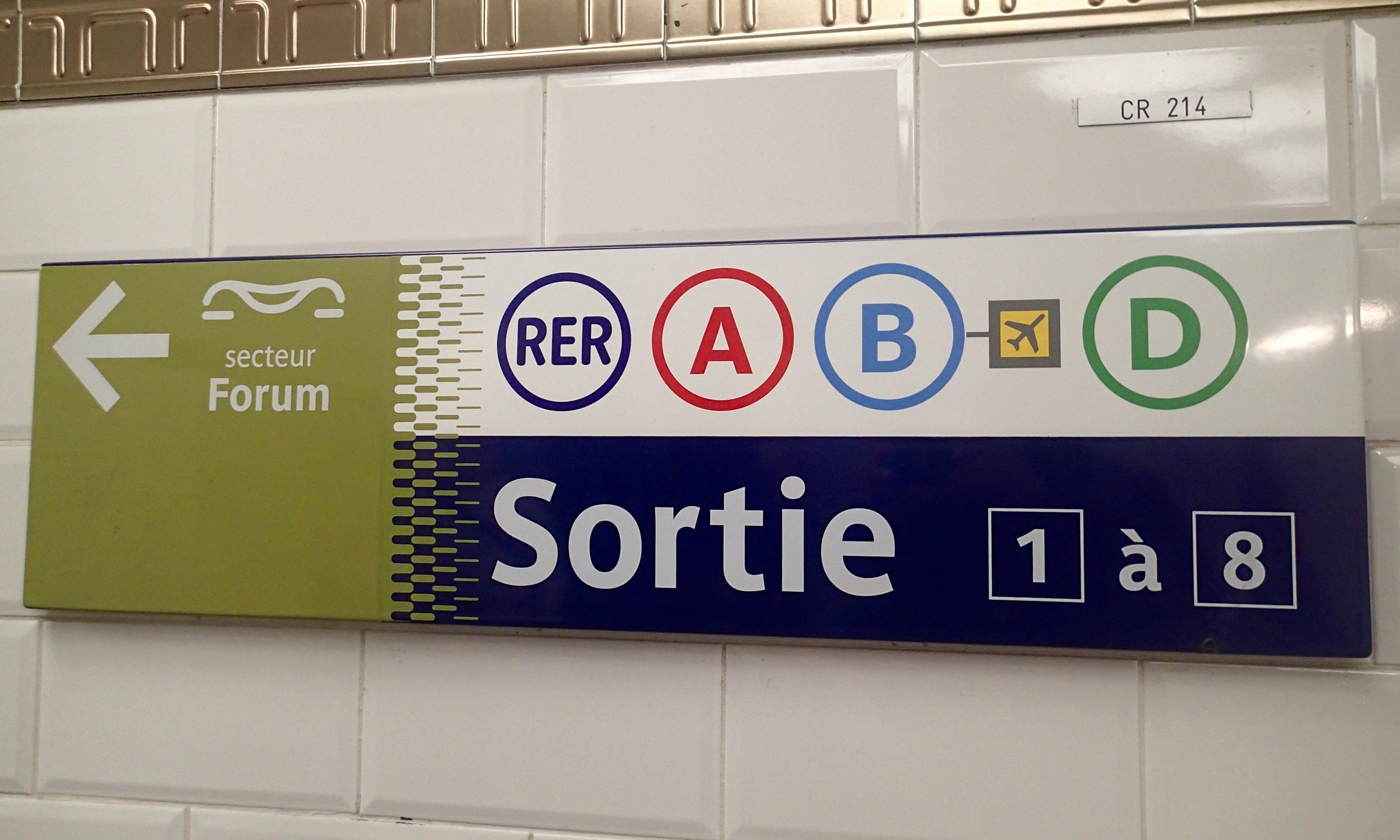The other day I spent an hour and a half inside the Châtelet-Les Halles metro station in central Paris. Wikipedia tells me that it’s the world’s largest public-transport station. Five metro lines and three suburban express lines converge there, and 750.000 people pass through it every day—roughly four times the traffic of Times Square subway station in New York City.
The entire thing is undergoing repairs right now. Tarpaulin, exposed wires on ceilings and walls; cement and dust everywhere; missing signage; a few corridors or walkways blocked altogether.
In brief, Châtelet-Les Halles is a huge, busy, noisy, crowded place; a complex environment, difficult, threatening, suffocating.
As it turns out, it’s also wonderful and fascinating.
I had several purposes in mind when I went there. I wanted to see if I could navigate it without losing myself. I wanted to see if I could stay calm and focused while hundreds of people swarmed past me. I wanted to see if I could make time for myself when the environment seemed to indicate that time had run out. I wanted to see if I could change my reactions to what, in the past, I had considered a hopelessly disagreeable situation.
The world is made of information, and your life consists in what information you decide to pay attention to and how you interpret it. A passerby smiles at you out in the street; that’s information. Is the smile friendly, sarcastic, judgmental, molesting, meaningful, meaningless? You have to notice the smile first, then interpret it, then choose how to react to it. This play between information and interpretation goes on uninterrupted in everyone’s lives.
Châtelet-Les Halles contains a tremendous amount of information. To enter the station is to become an interpreter of a particular informational universe. Some of the information is sonic: the sounds of trains arriving and departing, of escalators whirring and squeaking, of announcements over loudspeakers, of people talking, cursing, or shouting in a hundred languages, of buskers playing and singing.
Some of the information is olfactory: cement and dust, hints of perfume or tobacco propagating from the clothes and the hair of people standing an inch away from you. There’s spatial information, visual information, numerical information, you name it.
Some of the information is graphic: maps, signs, arrows, numbered exits. In a place like Châtelet-Les Halles, these graphic signs are supremely important. No one would be able to enter and exit the station safely without the maps and arrows. There exists a whole art and science of graphic information display, called infographics. Wikipedia has an extensive, well-written page about it, full of links to other useful pages.
One of my purposes visiting the station was to suss out its infographics. Do the maps and signs help? Is the information clearly laid out? Can I actually understand it all and find my way from line 7 to RER B? Now that the station is being redone, its infographics too are changing. It’s interesting to detect the efforts the engineers and architects are making to help people navigate the station.
You can conceive of Châtelet-Les Halles as a single, enormous station; or as two separate, interlinked stations ("Châtelet" and "Les Halles"); or as three separate stations. It makes a difference as to how you respond to it. A single, enormous station: a threat. Three interlinked stations: nifty! And it makes a difference as to how you conceptualize and visualize it all.
Here is the ghost of the station, seen underneath the city. It allows you to place the various metro lines in geographical context. And it allows you to imagine how big the thing is. Then your imagination can decide: big and terrible, or big and wonderful!
This one here is engineering-oriented. It'll delight boys and confuse old ladies. It happens to be out-of-date; since it was drawn and published, a whole new metro line has been built (the fully automated 14, connecting Gare St Lazare to Olympiades).
This one is schematic, reducing the station to as little graphic information as possible. It's a friend to the analytical brain, who's likely to exclaim, "Ah-ha! I get it now! I love it!"
The three different sections of the station—or, if you wish, the three separate and interlinked stations—have received names and dedicated symbols: “secteur Seine, secteur Rivoli, secteur Forum.” These names are indicated everywhere throughout the station. Very, very helpful!
We’ll say that there are fifty corridors in the station, and twenty intersections between corridors (these are inexact numbers, just for the sake of argument). At corridor intersections, now there are new, huge signs indicating the line number and its destination. Very, very helpful!
The only thing is, it doesn’t matter how good the infographics are if you’re in an agitated psycho-physical state. Stressed out, confused, hypoglycemic, showing early signs of dementia, with a screaming child hanging from your neck, with a broken heel on your stiletto shoes, not a French speaker, impatient, drunk, illiterate? You won’t see the sign, and you if you see it you won’t be able to interpret it, and if you interpret it you won’t be able to act upon your interpretation. You’re lost, and you’ll stay lost.
I myself have had bouts of hypoglycemia in public spaces. I suddenly feel very hungry, my skull gets sweaty and cold, my arms and legs shake, and my mental acuity starts going down quickly. It happened to me at the main train station in Brussels a couple of years ago, for instance. In that state, I’m really not very intelligent.
And that was one of the ideas behind my visit to Châtelet-Les Halles: a sort of intelligence training. Let me go into a complicated environment, and let me deal with it—I mean, deal with myself in it, deal with my habits and tics, deal with my fragilities, my assumptions, my likes and dislikes, the risk of stress-induced hypoglycemia, the risk of “I want my mommy!’’
To traverse an unknown station with a specific, urgent task or appointment is “advanced.” I set my visit to Châtelet-Les Halles at “beginner,” even though I know the station well after 26 years in Paris. I gave myself unlimited time. I roamed freely, without worrying about entrances, exits, connections. (All counted, there are 19 exits.) I’d walk down a corridor, then just turn around and re-walk it. I’d look at a map and ponder the infographics. I’d stand at a corner, slightly removed from the crowd, and . . . just stand there, watching and listening. In a minute of watching, you'll see a living portrait of humanity: two hundred people rushing by, men and women and children of all shapes and nationalities.
If you decide to be in a place, your perception of the place changes considerably—if you really are in the "here, now" of that place, willingly, gladly. Noise becomes sound, and sound becomes music; what used to be an annoying, thick racket of indeterminate noise is now a sophisticated soundtrack to an intriguing movie. The confusing corridors become a mythical labyrinth, where Theseus is seeking to meet and destroy the Minotaur. Ariadne’s ball of thread will allow you to retrace your path and find your way back out of the maze. No, no; the whole station is the underworld, where Orpheus is searching for his Eurydice. Love shall prevail . . . unless Orpheus looks back too soon, then he'll lose Eurydice forever.
Deep inside Châtelet-Les Halles, I became Theseus, and I became Orpheus. This was the result of an interaction between the environment itself and my efforts at keeping my head about me within the environment.
Information, interpretation: the world is what you make of it.
©2016, Pedro de Alcantara










